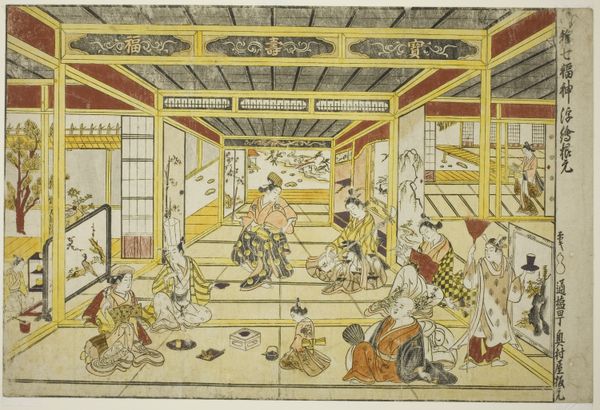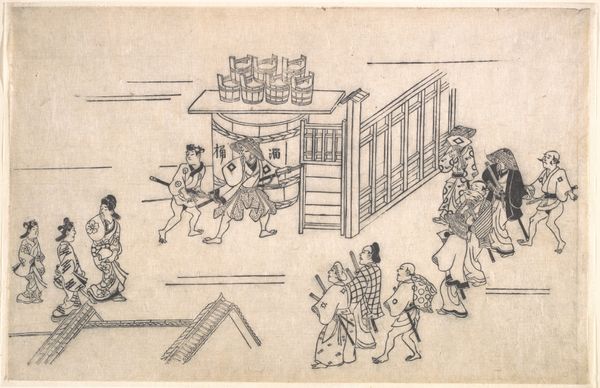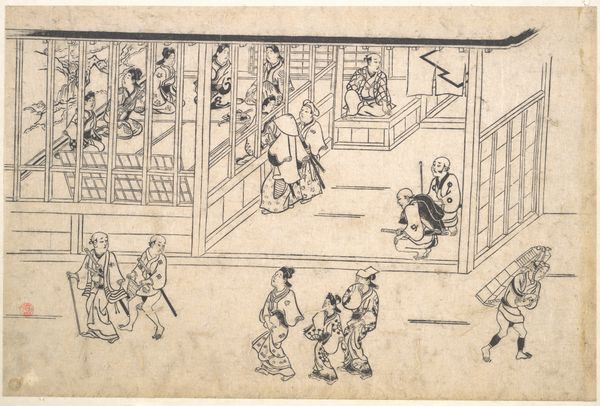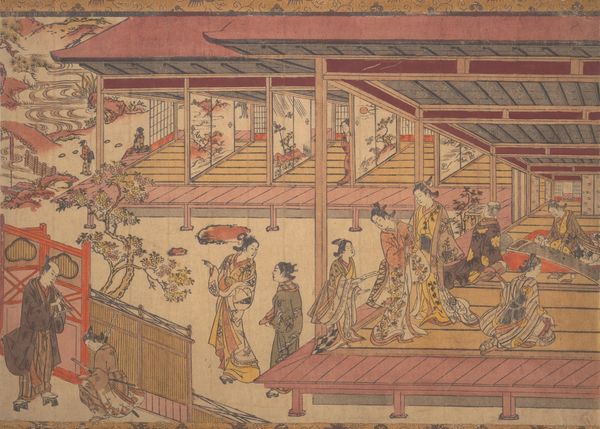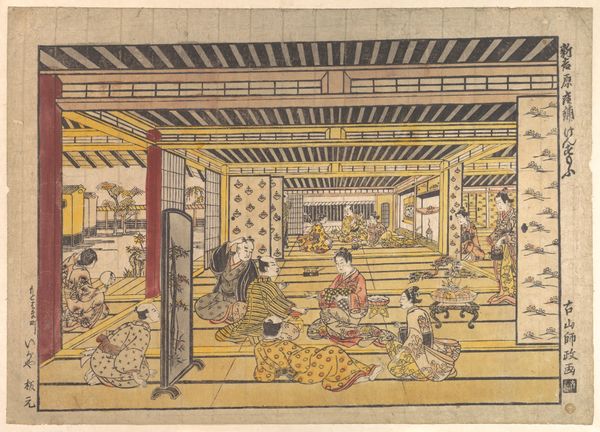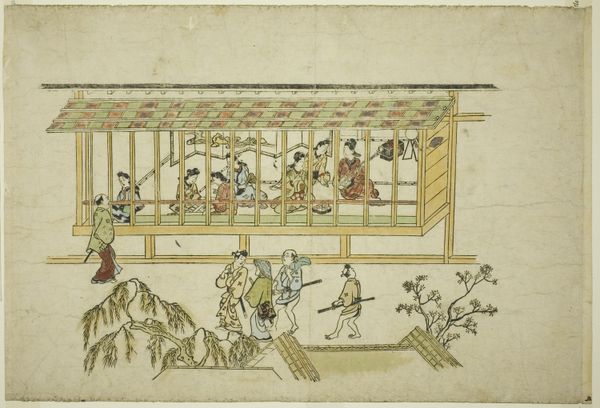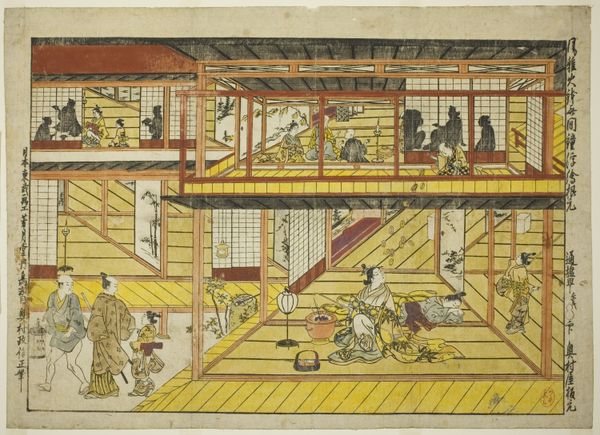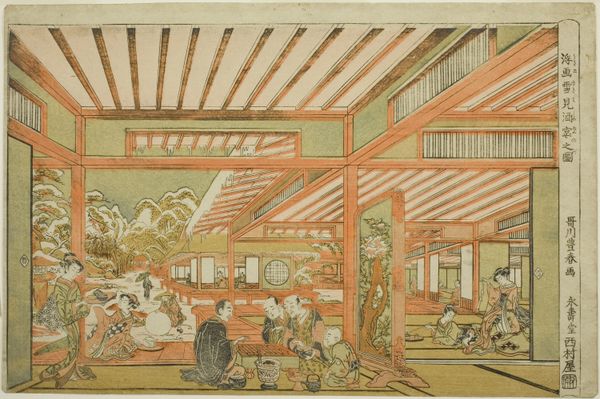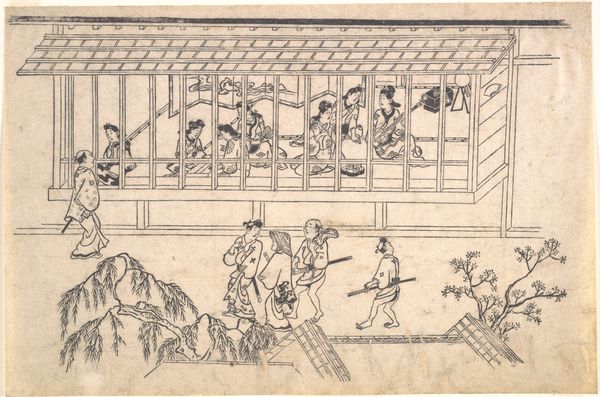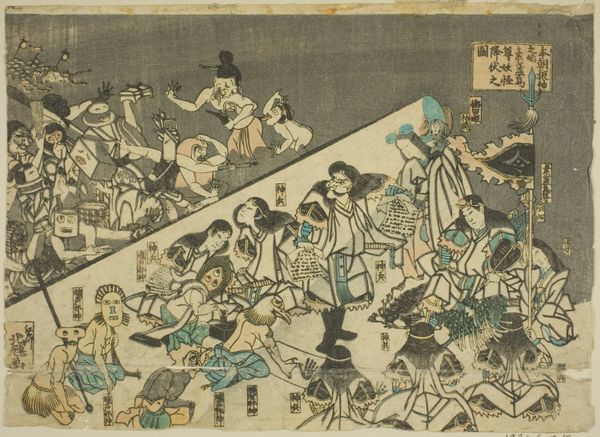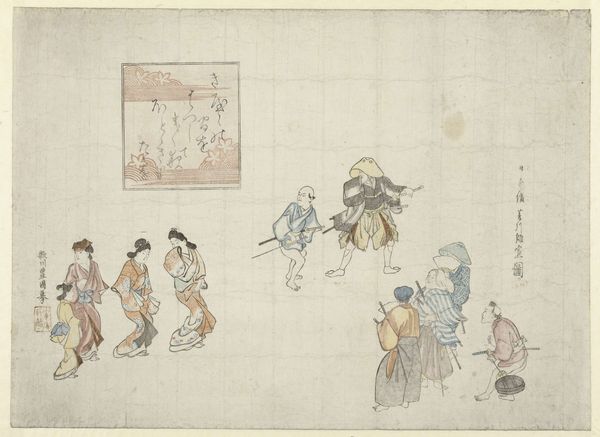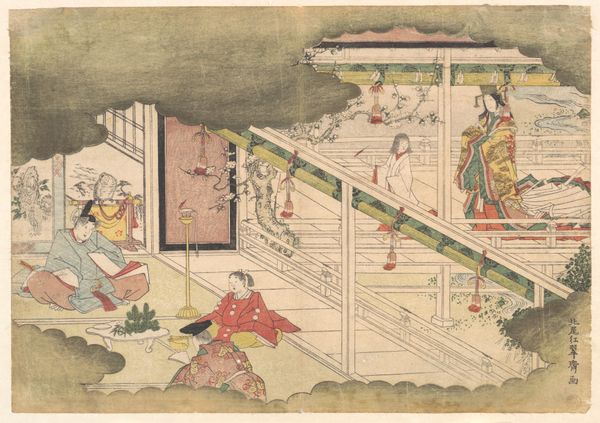
Scene in the Yoshiwara 1670 - 1690
0:00
0:00
print, woodcut
# print
#
asian-art
#
ukiyo-e
#
figuration
#
woodcut
#
genre-painting
Dimensions: 11 1/4 x 17 31/32 in. (28.6 x 45.7 cm)
Copyright: Public Domain
Curator: Looking at this woodcut print, "Scene in the Yoshiwara", made by Hishikawa Moronobu between 1670 and 1690, I'm immediately struck by the bustling atmosphere it conveys. Editor: Yes, it’s full of life. The constrained color palette seems almost at odds with the dynamism of the composition, but that makes it incredibly compelling to me. I'm thinking a lot about labor looking at it, how each figure contributes to the complex workings of this entertainment district. Curator: Absolutely. Considering it’s a ukiyo-e print, destined for a relatively wide circulation, its portrayal of the Yoshiwara, a pleasure district in Edo, becomes quite significant. How were such spaces produced and consumed as images? Editor: It’s a fascinating question when we delve into production—the woodcut technique itself is laborious. Who were the craftspeople involved beyond Moronobu, and what were their conditions of work? The physical act of carving and printing gives a tactile sense to this world. This challenges a simplified view of it. Curator: Exactly. And thinking historically, the Yoshiwara itself was a curated space, a stage managed by the authorities, reflecting the socio-political context. Consider how class differences are visually presented through clothing, posture and activity within a framed location like the teahouse in the upper left. It speaks volumes about how society was organized, consumed, and understood. Editor: And this consumption wasn’t limited to viewing. The material reality of this print—its paper, inks, and affordable price—speaks volumes about its function in society. This print served more than just aesthetics; it documented, perhaps idealized or satirized a specific social landscape. A cheap memento and reminder of fleeting moments that only served to promote this world for some. Curator: That is very true, because ukiyo-e prints made imagery accessible to common people and provided ways of interpreting urban life and culture during the Edo period. Its existence suggests not only the existence of such spaces, but its broader impacts in the cultural memory. Editor: Looking back, seeing the labor and the construction of images of leisure offers fresh understandings of social experiences. Curator: Yes, it pulls back layers from a seemingly simple snapshot to reveal the history and labor intertwined within the production and context of this woodblock print.
Comments
No comments
Be the first to comment and join the conversation on the ultimate creative platform.
